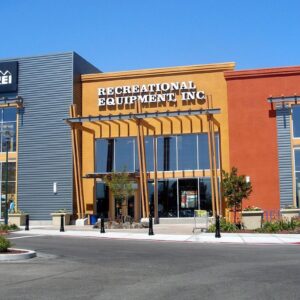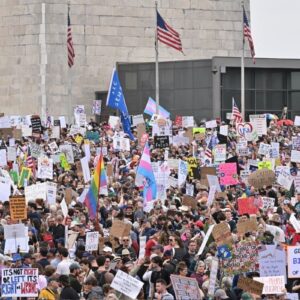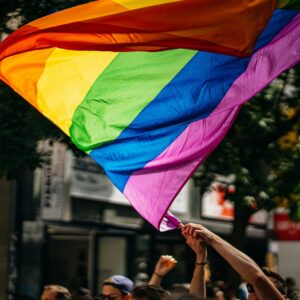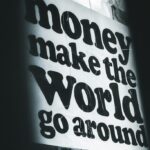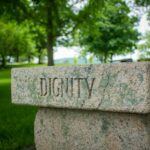
We rarely speak honestly about the human cost of civic work. I have spent my life in nonprofits—running agencies, working in philanthropy, serving in government, organizing from the grassroots. And what I’ve come to understand is this: The work can be deeply meaningful and rewarding, but it can also exact a quiet, unseen cost.
Years ago, I was walking through the waiting room at NorthPoint Health & Wellness Center—a place I once led and where I’d been a patient as a child. There, I met Kay Williams, a man whose quiet dignity always commanded respect.
When I was younger—a radical kid burning with energy—I dismissed leaders like Kay as part of an older generation that compromised too much. What I missed was that his fight was steady and unflinching. Sabathani Community Center, where Kay was executive director, gave young people proof that someone believed in them.
Kay and leaders like him pour everything they have into their communities and end up with little but exhaustion, illness, and poverty. We celebrate these leaders when convenient, but we forget them when the toll becomes visible.
How is it that those who give the most so often end up with the least?
The Unseen Weight
That question stayed with me. It surfaced again during a winter visit to see my old friends Rachel and David in Minneapolis. Rachel is the kind of leader people call when an organization is in crisis; she spoke candidly about the emotional toll of trying to transform broken systems and hold people with care. Resilience, she said, is often just another word for depletion.
Today’s nonprofit leaders too often are expected to absorb every shock, heal every wound—alone.
Later, reading Thomas Ricks’s Waging a Good War: A Military History of the Civil Rights Movement, 1954–1968, I was struck by the stories of civil rights leaders who endured constant threats, stress, and what Ricks calls “wall-to-wall terror.” The trauma didn’t end with the movement’s victories. It left scars on those who had carried it—local organizers, foot soldiers, even their children. Many suffered symptoms we would now recognize as PTSD, yet their pain remained largely unspoken.
Just as the civil rights movement left invisible wounds, today’s nonprofit leaders too often are expected to absorb every shock, heal every wound—alone. As Angela Glover Blackwell says, “The stress is constant and the sacrifice is persistent—and our sector rarely acknowledges, let alone addresses, the fallout.”
The Systems Behind the Sacrifice
Many of us—including me—have leaned on corporate or academic methods to address deep community challenges. We’ve hoped that strategic plans, logic models, and the latest frameworks would move the needle. But poverty, disinvestment, and racial inequality aren’t technical glitches—they’re deeply embedded legacies of harm. You can’t spreadsheet your way out of injustice.
I saw this firsthand in Minneapolis after the police killing of Jamar Clark in 2015, which sparked weeks of protest and an occupation outside the Fourth Precinct police station. I was invited—along with other African American leaders—to a year-long series of meetings with CEOs and senior executives from the Minnesota corporate community, including Target, General Mills, Medtronic, US Bank, Mortenson Construction, and Wells Fargo. The stated goal was to explore how these corporations could partner with Black community leaders to advance economic opportunities.
The conversations were respectful and often well-intentioned. But as the meetings unfolded, a familiar pattern took shape. Instead of building on grassroots solutions already taking root, the focus shifted to top-down interventions—strategies rooted in corporate planning, efficiency metrics, and return-on-investment thinking.
This was technocracy in action—the belief that complex, generational issues could be solved with the right dashboard, the right consultants, the right design process. But communities aren’t companies. Their struggles can’t be managed on a balance sheet. And while the language of partnership was used, it was clear who was expected to lead—and who was expected to be “fixed.”
Beneath the surface, there was also a desire not just to contribute, but to take credit. As the meetings wore on and it became clear that corporate frameworks didn’t fit, the tone shifted. Some suggested cultural factors, not structural ones, drove persistent economic and social inequalities.
Justice means designing systems that direct resources, power, and opportunity toward those who have been historically denied.
One corporate leader I respected even remarked, “We’ve poured millions into the Black community and have nothing to show for it.” It wasn’t said with hostility, but it reflected a damaging myth. The truth is that those “millions” were never invested in economic opportunity or community development. What was spent—on policing and containment—only deepened the divide.
As Dr. Samuel Myers has observed, Minnesota embodies a troubling paradox—one where progressive ideals coexist with some of the worst racial disparities in the nation.
Eventually, the effort unraveled. The meetings stopped, the executives stepped back, and no serious investments were made.
In hindsight, what was missing was humility, staying power, and a willingness to recognize that many answers already exist within the communities themselves. This dynamic isn’t unique to Minneapolis—it echoes across the country.
Years later, when the murder of George Floyd once again made Minneapolis an epicenter of national reckoning, it became painfully clear: The warning signs had been there all along. Systems failed not because no one knew, but because those with power chose not to act.
To be clear, skills and expertise matter—but only when they support, not overshadow, community knowledge and lived experience. Strategic thinking, data analysis, and resource management all have their place. But the challenge isn’t technical knowledge; it’s when technical skill crowds out other, equally vital ways of knowing and doing.
Across the country, an overreliance on technical fixes has eroded participatory forms of engagement. As Harry Boyte reminds us, we’ve created “oases of democratic life in a desert of technocratic and market practices.” When public problem-solving becomes the exclusive domain of experts and consultants, rather than the shared work of neighbors, the result is powerlessness, shrinking democracy, and diminished capacity.
As participatory spaces shrink, so too does the collective faith that justice can be achieved together. Real change doesn’t start with dashboards. It starts with relationships: with trust; with the messy, unglamorous work of showing up for one another—not in acts of one-sided help, but in genuine collaboration.
And yet the spirit of democratic engagement has come under pressure. If you had told me a few years ago that equity would fall out of fashion, or that basic rights we’d taken for granted would be up for debate, I might have brushed it off as alarmist. But now, you can feel it—how civic life has grown thinner, how the air feels heavier when we talk about justice, or even hope. Around the world, democracy itself feels on shaky ground.
As historian Darrin McMahon observed, “equality may be more at home with hierarchy and exclusion than modern egalitarians care to admit.” That tension is not just theoretical—it is visible in how organizations respond to challenge. I’ve watched them conflate survival with progress—grabbing whatever grants they can, calling incremental steps revolutionary, but never matching the scale of the need.
And yet people like Kay, Rachel, and countless others persist—not to offer charity, but to work with neighbors out of conviction and hope. That belief isn’t naïve; it’s deeply principled. It’s rooted in a vision of justice that is not abstract, but personal.
Justice Isn’t Theoretical—It’s Personal
Justice forces us to confront a hard truth about merit and privilege: much of what we call “merit” is actually the product of systems designed to benefit some while excluding others. Philosopher John Rawls in A Theory of Justice called this “moral arbitrariness”—the idea that no one chooses the circumstances of their birth.
Agency is not handed down by experts; it’s forged in the act of joining with others to make something better.
But these circumstances aren’t simply accidents of fate or luck. They’ve been shaped by deliberate choices—by policy, history, and systems built to advantage some groups and disadvantage others. In the United States, race, class, and gender have long decided who gets opportunity and who is locked out. These are not random outcomes.
Rawls’s “veil of ignorance” concept challenges us to imagine a just society—one we’d design without knowing in advance our race, gender, family income, or zip code. The moral imperative is clear: If we wouldn’t want to be born into the bottom of the well, we cannot justify systems that keep others there.
Rawls argued that talents and advantages should be treated as a shared resource—not a private entitlement. In a just society, “those who are favored by nature may gain from their good fortune only on terms that improve the situation of the less advantaged.”
Justice means designing systems that direct resources, power, and opportunity toward those who have been historically denied—not out of charity, but because true justice means dismantling the structures that keep people at the bottom—and building new ones that lift everyone.
Reclaiming What Civic Work Is For
Too often, civic work aims less to solve problems than to sustain them—driven by a model of self-sacrifice, organizational survival, and endless adaptation. Movements are encouraged to mimic market logic, while the systems they aim to transform remain untouched. The result is a nonprofit sector that often rewards conformity.
Support for justice tends to rise when it’s popular and retreat when it requires staying power. Accountability to communities becomes secondary.
These patterns mirror a broader shift in US civic life: a long drift away from collective action toward individual achievement. Over the past several decades, our civic fabric has frayed—not just in institutions, but in the very idea of shared responsibility. Participation has become more fragmented—less about we, more about I.
This is not new. Democracy’s strength has always rested on people acting together, close to the ground, not waiting for distant institutions. Agency is not handed down by experts; it’s forged in the act of joining with others to make something better.
We owe community leaders more than praise for their endurance. We owe them systems that multiply their impact rather than extract it. When leaders are forced to choose between serving their communities and surviving within systems designed to wear them down, the problem isn’t individual burnout—it’s institutional failure.
From Scarcity to Renewal: A Civic Reckoning
To move beyond cycles of exhaustion and scarcity, everyone with a stake in civic life—organizational leaders, funders, policymakers, public agencies, and community members—must look past narrow metrics of efficiency and outcomes.
Reform means building structures that make participation genuinely sustainable, resources restorative, and accountability shared, not extractive.
Every time a leader is lost to burnout, the loss isn’t individual but communal—the kind of transformation possible in that community slips further out of reach. The task is not to retrofit individuals with more resilience but to reshape the systems.
This moment is a reckoning, but it’s also an opportunity. History shows that renewal comes not by chance, but through mass civic organizing, unified action across sectors, and the building of strong, accountable institutions. Research from the Varieties of Democracy Institute finds that democratic recovery is possible whenever communities, allies, and institutions mobilize together and insist on lasting change.
The future won’t be shaped by the endurance of a single leader, but by our collective willingness to demand better and build anew. The work ahead is not solitary or symbolic—it’s shared, systemic, and ours to claim.

